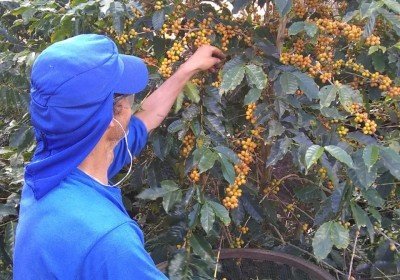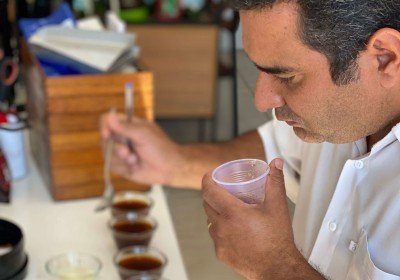 English
English
 English
English
One of the essential steps for guaranteeing the excellence of the coffee drink is the planting. Here, in Mantissa Farm, we carefully prepare the ground for it to receive the seedlings. Usually, we carry out the plowing and harrowing, and then the soil handling for the soil to receive the plant. The planting is performed during the rain season, as the soil is moist. Afterwards, the fertilization and the liming are carried out, depending on the soil's environmental conditions.
Among the techniques employed during the coffee farming, we can mention the use of grafted seedlings, the thickening or the smaller space between the plants, the coffee crops irrigation and the employment of premature varieties (smaller and more productive, making sure the first harvest will be made one year and a half after the crop is established).
The seedlings are thoroughly selected. They are collected, planted and kept in special nurseries, where they will give rise to seedlings. When the seedlings reach from 4 to 6 pairs of leaves on their branches, they are taken to soils that will host coffee. Each coffee plant is irrigated, in order to fulfill the needs arising from the lack of rain and extended droughts.
It is common to use nutrients to enrich a soil, such as nitrogen-based fertilizers, phosphate and potassium, and other supplementary nutrients, such as manganese, iron, boron and zinc. Those elements are used according to the nature of the soil and the intensity of the rains, coffee tree age, and the genetic value of the plants.
The thickening enables us to plant about 10,000 seedlings along 5 hectares. With this technique, the width of the streets between the line is of 3.5 m at the most, and the space between the plants is smaller (from 0.8 to 1 m). Thus, we manage to plant an expressive amount of seedlings.
Specifically, the irrigation in coffee crops enables yearly harvests to be made, instead of one harvest each two years. It is important to highlight that all the water employed at irrigating must be analyzed for the quality to be tested. Each coffee tree must be irrigated according to its need, due to the lack of rains, extended droughts and ground types.
The Mantissa Farm is located among peaks, mountains and mounts. Considering the uneven ground, we chose to plant in level curves with the purpose of preventing the soil from eroding, besides contributing for draining the rain water, making it flow into the water more easily. Still, such inclination contributes to the conservation of nutrients, essential for a succeeded plantation.





Submit this form or contact us through our e-mail and phone number.
Mail: contato@mantissacoffees.com.br
Phone: +55 35 3715-2773
Fax: +55 35 3715-2773